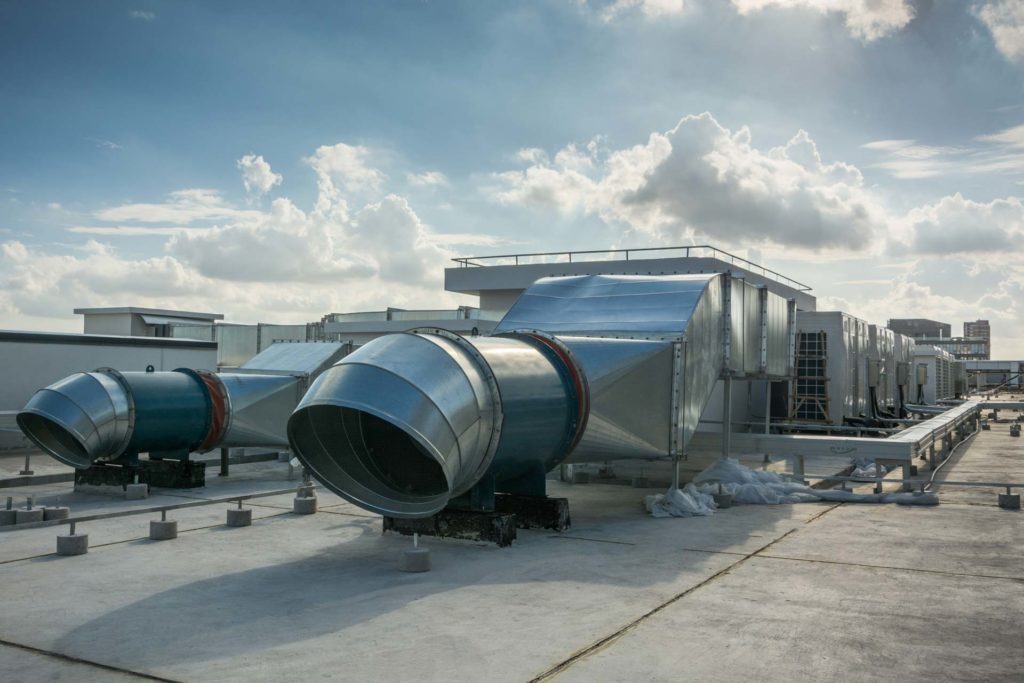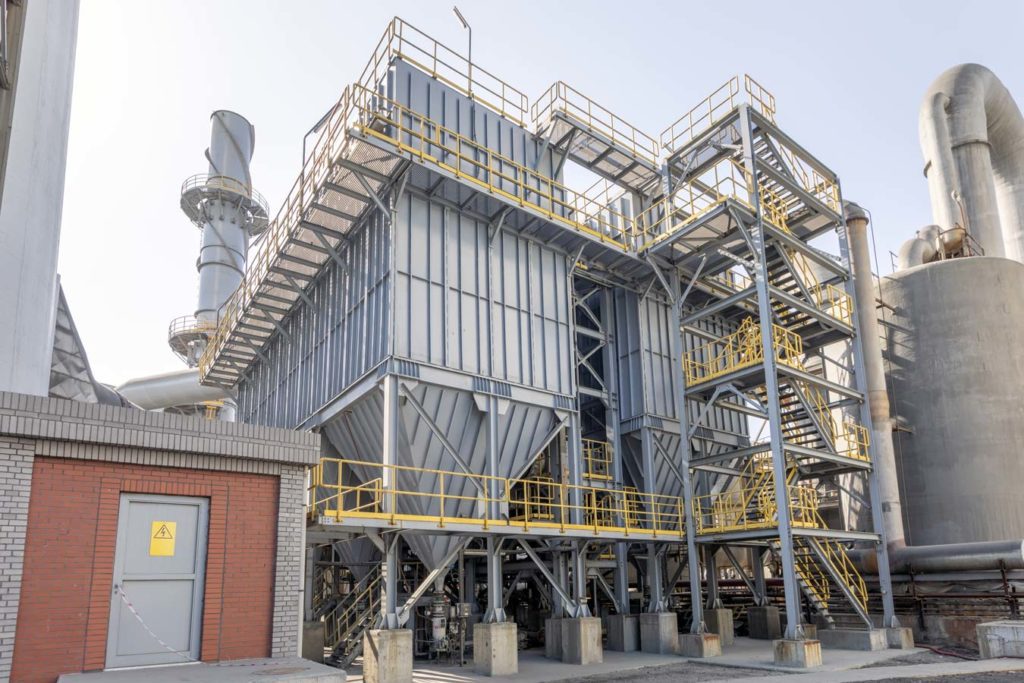originally published October 2022 – updated July 2025
Industrial fans help control airflow, regulate temperature, and improve workplace safety in many industries. Without proper ventilation and air movement, many industrial processes would be inefficient or even hazardous.
Choosing the right fan can make operations more productive, reduce energy costs, and improve worker safety. This guide explores the most common types of industrial fans and their uses in asphalt and cement, chemical processing, food processing, and power generation.
Types of Industrial Fans
Many types of industrial fans exist, each designed for specific tasks. While some fans focus on high-pressure air movement, others are built for ventilation or cooling. Below are some of the most commonly used industrial fans and how they function in industrial environments:
Centrifugal Fans
Centrifugal fans pull air in at a right angle and push it outward using rotating blades. Their enclosed design allows them to handle high-pressure conditions while reducing the buildup of airborne debris inside the fan.
Because of their ability to withstand extreme conditions, they are commonly used in manufacturing and heavy industrial applications.
Applications include:
- Removing dust and debris in industrial settings
- Supporting air pollution control systems
- Regulating temperature in HVAC systems
- Improving airflow in furnaces and boilers
Axial Fans
Axial fans move air parallel to their shaft, creating low-pressure, high-volume airflow. These fans are ideal for cooling large areas efficiently and are commonly used in factories, warehouses, and other spaces that require consistent ventilation.
Applications include:
- Moving air efficiently in large warehouses and storage facilities
- General-purpose ventilation in commercial and industrial buildings
- Preventing equipment from overheating
- Cooling confined workspaces or large open areas
High-Temperature Fans
High-temperature fans withstand extreme heat in manufacturing environments like furnaces, ovens, and foundries. Their ability to maintain airflow in high-heat conditions makes them essential for temperature-sensitive applications.
Applications include:
- Circulating air in aluminum and steel furnaces
- Cooling plastic, metal, and glass products after processing
- Enhancing airflow in industrial ovens and annealing chambers
- Ensuring worker safety in environments with extreme heat buildup
Exhaust Fans
Exhaust fans remove excess moisture, heat, and pollutants from enclosed spaces. These fans are essential in maintaining air quality, particularly in areas where harmful fumes or excess humidity could pose safety risks.
Applications include:
- Extracting fumes and vapors in chemical processing plants
- Reducing humidity in food processing and storage areas
- Ventilating indoor swimming pools and moisture-prone spaces
- Preventing the buildup of airborne contaminants in enclosed work areas
Industrial Fans In Action: What Industries Need Them?
Industrial fans play a key role across many industries. From improving air circulation to managing air pollutants, these fans help maintain safe and efficient operations.
Below, we explore how different types of industrial fans support specific industries.
Asphalt & Cement: High-Temperature Airflow and Dust Control
Asphalt and cement manufacturing processes generate significant dust and require high-temperature air movement.
Centrifugal industrial fans help with dust control, airflow management, and heat regulation, ensuring compliance with air quality standards.
Without proper ventilation, airborne particulates can create respiratory hazards for workers and reduce the efficiency of production equipment.
Chemical Processing: Managing Heat and Hazardous Fumes
Chemical processing involves the handling of volatile substances, creating high heat and hazardous fumes. Industrial fans are used to ventilate production areas, reduce the buildup of harmful chemicals, and keep equipment cool.
Axial and centrifugal fans are often integrated into air filtration systems to ensure that hazardous byproducts are properly managed.
Food Processing: Sanitation and Climate Control
In food processing facilities, industrial fans help maintain sanitation by preventing contamination and ensuring proper airflow.
These fans help regulate temperature in production areas, reduce condensation that could lead to bacterial growth, and support the drying process for various food products.
Exhaust fans and axial fans are commonly used to create a controlled, contaminant-free environment.
Power Generation: Cooling and Emissions Management
Power plants rely on industrial fans to regulate air movement, cool critical components, and manage emissions.
Forced draft, induced draft, and dust control fans are used to optimize combustion efficiency, remove exhaust gases, and cool down turbines and generators.
Without effective fan systems in power generation facilities, overheating and poor air quality could lead to equipment failure and regulatory violations.
Breathe Easy with Industrial Fans from Baghouse America
Baghouse America provides high-quality industrial fans and air filtration solutions to meet the unique needs of industrial operations.
We help businesses stay compliant with environmental regulations while improving air quality and efficiency. Our products are built for durability, reliability, and cost-effectiveness.
With decades of experience, we offer full-scale baghouse installations and a wide range of replacement parts compatible with top brands like Goyen®, Mecair®, Donaldson Torit®, and more.
Need the right industrial fan for your facility? Our team can help you select the best solution for your industry’s airflow and compliance needs. Contact us today to get started!

